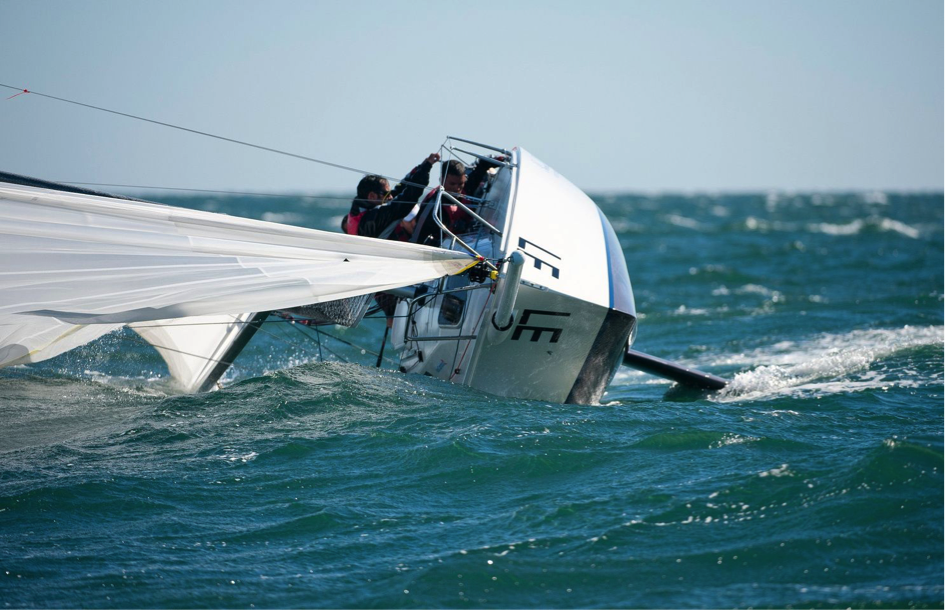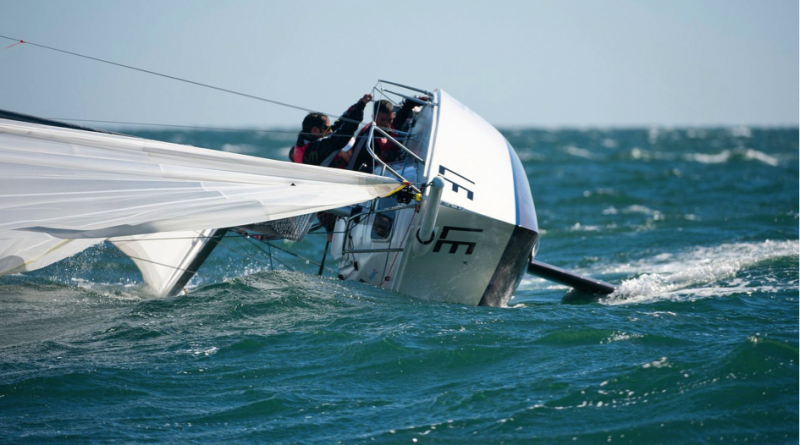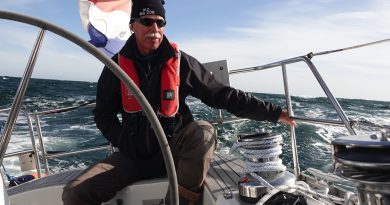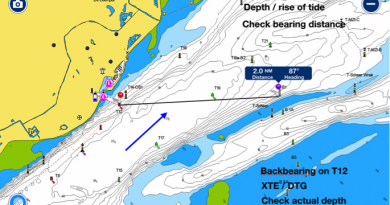RYA-tips #32 – Broaching – when sails overpower the rudder
Zeilen is een combinatie van wetenschap en kunst. En voor wie daar meer over wilt weten schrijft Albert De Nijs, instructeur bij de De Zeezeilers van Marken wekelijks een rubriek met tips&trics van de Royal Yachting Association.

In recent articles we discussed the need to keep the yacht balanced and in trim. Important for windvanes to work, reduce the load of the autopilot and more comfortable for crew and boat.
When the wind picks up and we are overpowered, there is a possibility that the rudder loses authority and stalls, unable to balance the power of the sails. We’ll discuss two types of losing control, the upwind version (rounding up) and the downwind one (broaching).
When sailing upwind in a strong blow, there will be weather helm. In a strong gust the heel increases with the rail in the water. On yachts with a wide stern the rudder is lifted, further reducing its effectiveness. The boat rounds up, sails luff and start flapping and the boat recovers. When the boat starts to round up, you can ease the main and release the vang (kicker) to increase the twist. These actions will depower the mainsail and maybe you can recover before you are head to wind.
Sailing with a lot of heel is not very efficient, leeway increases, the wind passes over the sails and the rudder acts as a brake. It’s also quite a wet experience. When the boat rounds up this is a clear sign that the rudder is overpowered by the sails and it’s time to put a reef in.
When sailing downwind and you get overpowered it’s a different situation. Due to a gust or wave, the yacht can heel excessively, and will start to round up. The fast turn increases heel, and the rudder loses grip on the water (the rudder stalls, waterflow detaches). You lose speed, the sails act like kites and pull the yacht down. The yacht ends on its side with sails and spreaders in the water. When the sheets are eased, the yacht will right itself due its basic stability. Check for people in the water, injuries, damage, lines over the side etcetera.
Easing the mainsheet early might not be enough to prevent a broach because the boom cannot swing out far enough to depower the main (raked spreaders or the boom dragging in the water). The best option is to steer downwind when hit by a gust and try to keep the boat level. This is especially relevant with a spinnaker or gennaker up. When the rudder is stalled, centralize it, allowing the waterflow to re-attach, and only then steer downwind again.
Active helming and trimming of the sails can prevent a broach, but when weather helm increases, it is time to put a reef in. This keeps the yacht on her feet and speed under control.
For racing crews, it is a challenge to push the boat and crew hard, looking for more wind and more pressure. Long-distance cruisers will be looking more for balance, an even keel and comfort!
Albert de Nijs, Dutch Offshore Sailing Academy




